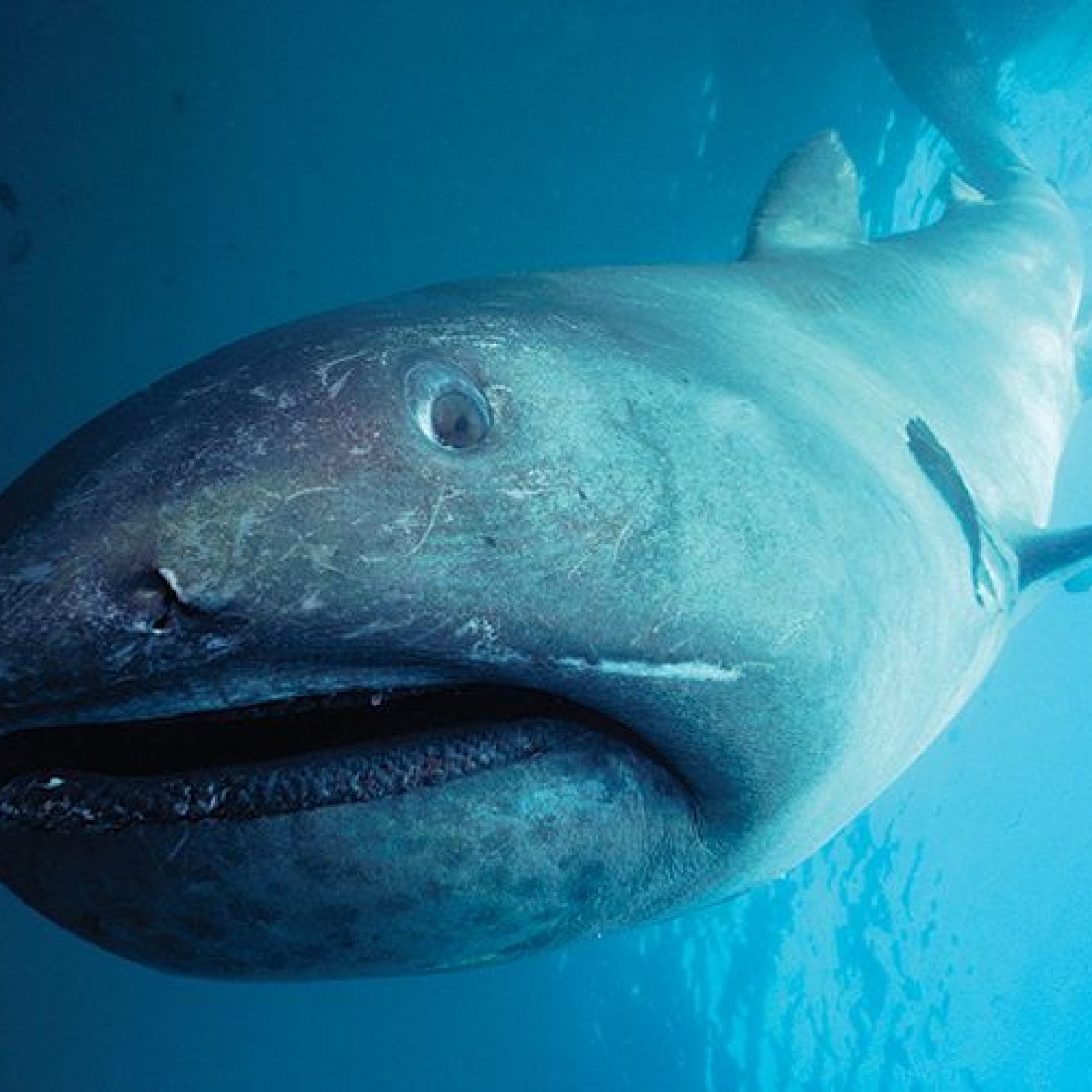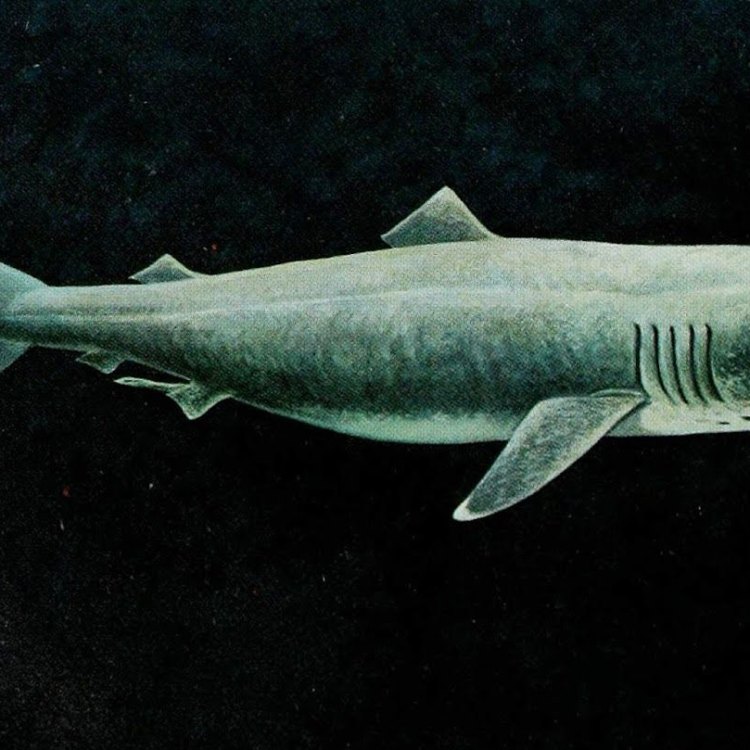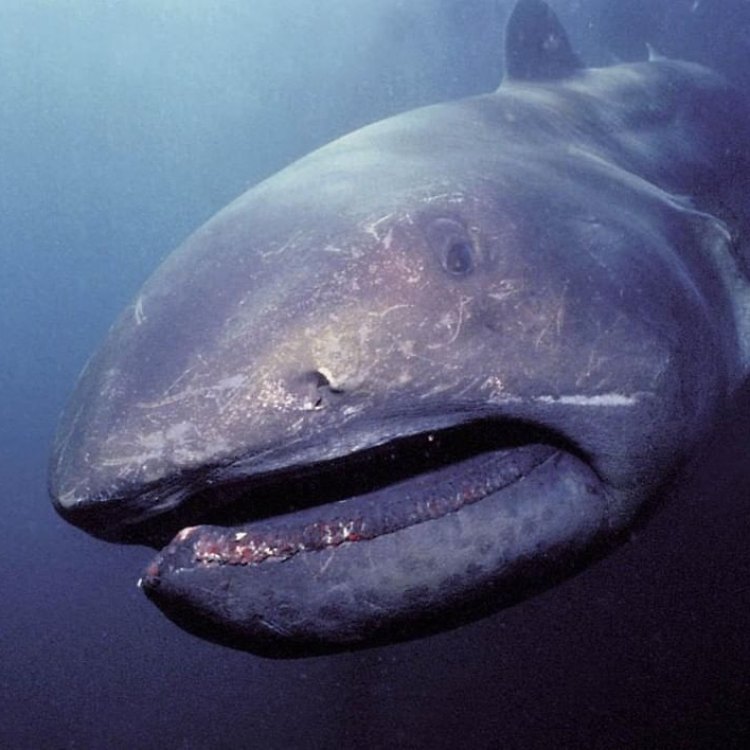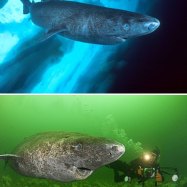
Megamouth Shark
Up to 5.5 meters (18 feet)
The Megamouth Shark is a fascinating creature found in a wide range of tropical and temperate waters. With a length of up to 5.5 meters, this member of the Megachasmidae family has a large, bulky body and small eyes, making it a unique addition to any marine life enthusiast's bucket list. #MegamouthShark #marinecreatures #oceanlife
Animal Details Summary:
Common Name: Megamouth Shark
Kingdom: Animalia
Habitat: Pelagic
The Mysterious Megamouth Shark: A Unique Filter-Feeder of the Seas
Beneath the vast, blue expanses of the world's oceans, lies a creature that has captured the curiosity and imagination of scientists and ocean enthusiasts - the Megamouth Shark. With its massive, gaping mouth and enigmatic appearance, this deep-sea dweller has continued to baffle researchers since its unexpected discovery in 1976. In this article, we will dive into the fascinating world of the Megamouth Shark and uncover its unique features and habits.The scientific name of this mysterious creature is Megachasma pelagios, but it is more commonly known as the Megamouth Shark Megamouth Shark. It belongs to the animal kingdom, Animalia, and is classified under the phylum Chordata and class Chondrichthyes, which includes all the cartilaginous fish such as sharks, rays, and skates. It is also part of the order Lamniformes, a family known for its large predatory sharks like the Great White Shark and the Mako Shark.
The Megamouth Shark is the sole species within the Megachasmidae family, making it a unique and rare find. These sharks are not only elusive, but their numbers are also scarce, making it a challenging animal to study and understand. Nonetheless, researchers have managed to gather some information about this intriguing creature, providing us with a glimpse into its mysterious world.
The Megamouth Shark is a pelagic species, meaning it is found in deep, open waters far from the shore. Despite its wide-ranging habitat, it is predominantly found in tropical and temperate waters across the globe. These sharks have been recorded in the Pacific, Indian and Atlantic Oceans, with sightings in Hawaii, Taiwan, South Africa, Brazil, and Japan.
It was in Hawaii where the first Megamouth Shark was accidentally discovered by a U Mandarin Rat Snake.S. Navy research vessel in 1976. The shark had become entangled in the ship's anchor and was brought to the surface, causing a frenzy within the scientific community. This initial contact sparked a newfound interest in studying this elusive species, and since then, there have been around 100 confirmed sightings.
One of the most striking features of the Megamouth Shark is its unique feeding method. Unlike most sharks that are active predators, this deep-sea creature is a filter-feeder. It has a massive, gaping mouth, measuring around 1.3 meters (4 feet) wide, with rows of small, sharp teeth lining its upper and lower jaws. However, these teeth are not used for hunting, but rather to trap and filter tiny organisms, such as plankton and krill, from the water.
These sharks swim with their mouths open, which creates a suction force, allowing them to filter out their prey. Their throat is also lined with gill rakers, which further filters out the water and helps isolate the food particles. This feeding technique is similar to that of the largest animal on the planet, the Blue Whale, solidifying the Megamouth Shark's place as an incredible filter-feeder.
In terms of physical appearance, the Megamouth Shark has a distinct body shape that sets it apart from other sharks. It has a massive, bulky body, compared to the more streamlined body of other shark species. It also has a wide head with small eyes and a large, rounded snout. Its overall body coloration is dark grey to black, making it difficult to spot in the dark and vast depths of the ocean.
The Megamouth Shark can reach impressive lengths, with the largest recorded individual measuring up to 5.5 meters (18 feet). Despite this size, it is considered a relatively small shark in comparison to other pelagic species. It also has a slow growth rate, with females reaching maturity at 4.5 meters (15 feet) and males at up to 3.9 meters (13 feet).
Due to the Megamouth Shark's scarce numbers and limited habitat, little is known about its behavior and reproduction. Scientists believe that they are solitary creatures that come together only for reproduction purposes. However, several pregnant females have been caught with developing embryos, indicating that they give birth to live young.
With such a limited understanding of this incredible creature, the importance of conservation efforts is paramount. The Megamouth Shark is listed as an endangered species by the International Union for Conservation of Nature (IUCN), with a possible threat from bycatch in fishing nets and accidental capture in deep-sea trawling. There is also a demand for its body parts, such as its fins, in the shark fin trade, which has contributed to its decline.
Efforts are being made to better understand and protect this enigmatic species. Researchers have begun using satellite tags to track the movements of these elusive sharks and gain more insight into their behavior and habitat. They have also set up acoustic monitoring stations to record their vocalizations, which could provide valuable information about their social behavior.
In addition to scientific research, public awareness is also crucial in promoting the conservation of the Megamouth Shark. By educating people about the importance of this species and its role in maintaining the balance of the ocean's ecosystem, we can help protect and preserve these creatures for future generations to admire and study.
In conclusion, the Megamouth Shark is a magnificent and mysterious creature that continues to surprise and fascinate researchers and ocean enthusiasts. With its unique feeding method, distinct physical appearance, and scarce numbers, it is no surprise that this elusive species remains one of the least understood in the animal kingdom. As we strive to uncover more about this enigmatic creature, let us also remember the importance of protecting and preserving its existence in our vast and mysterious oceans.

Megamouth Shark
Animal Details Megamouth Shark - Scientific Name: Megachasma pelagios
- Category: Animals M
- Scientific Name: Megachasma pelagios
- Common Name: Megamouth Shark
- Kingdom: Animalia
- Phylum: Chordata
- Class: Chondrichthyes
- Order: Lamniformes
- Family: Megachasmidae
- Habitat: Pelagic
- Feeding Method: Filter-feeder
- Geographical Distribution: Tropical and temperate oceans
- Country of Origin: Discovered in Hawaii
- Location: Wide range of tropical and temperate waters
- Animal Coloration: Dark grey to black
- Body Shape: Large, bulky body with a wide head and small eyes
- Length: Up to 5.5 meters (18 feet)

Megamouth Shark
- Adult Size: Unknown
- Average Lifespan: Unknown
- Reproduction: Ovoviviparous
- Reproductive Behavior: Unknown
- Sound or Call: Unknown
- Migration Pattern: Unknown
- Social Groups: Unknown
- Behavior: Slow and docile swimmer
- Threats: Bycatch in fishing nets
- Conservation Status: Data Deficient
- Impact on Ecosystem: Unknown
- Human Use: Rarely caught by fishermen
- Distinctive Features: Unusual, enlarged mouth and long, slender tail
- Interesting Facts: The Megamouth Shark is one of the rarest shark species, with only around 100 confirmed sightings.
- Predator: Unknown

Megachasma pelagios
The Elusive and Enigmatic Megamouth Shark
Hidden deep within the vast, dark depths of the ocean, lies a mysterious creature that has captured the curiosity of scientists and marine enthusiasts alike. With its unique features and elusive nature, the Megamouth Shark remains one of the most enigmatic and rarely seen species in the world. In this article, we will dive into the unknown world of the Megamouth Shark, exploring its distinct characteristics, behaviors, and importance in the ecosystem.The Megamouth Shark (Megachasma pelagios) is a large, slow-moving shark species that was only discovered in 1976 PeaceOfAnimals.Com. Despite being one of the rarest sharks in the world, little is known about its adult size, average lifespan, and reproductive behavior. This lack of information is due to the infrequency of sightings, with only around 100 confirmed sightings to date. With its elusive nature and elusive behavior, scientists are still trying to unravel the mysteries surrounding this fascinating creature.
One of the most distinctive features of the Megamouth Shark is its unusual, enlarged mouth, which stretches from one end of its head to the other. This unique adaptation is believed to aid in filter feeding, as the Megamouth Shark mostly feeds on plankton and small fish. This massive mouth is lined with hundreds of small, hooked teeth, which help the shark to filter out its food while swimming. In addition to its enlarged mouth, the Megamouth Shark also has a long, slender tail, which aids in its slow and docile swimming behavior.
Despite its large size and fearsome appearance, the Megamouth Shark is not a threat to humans. In fact, this species is known to be a slow and docile swimmer, often making it an easy target for fishermen Maned Wolf. Due to its rarity, the Megamouth Shark is rarely caught by fishermen, and as a result, there is very little knowledge about its migration patterns or social groups. It is believed that the Megamouth Shark spends most of its time in the deep waters of the ocean, only coming closer to the surface at night to feed.
Despite being a slow-moving and seemingly harmless species, the Megamouth Shark faces multiple threats, with its biggest threat being bycatch in fishing nets. As this species is not actively targeted by fishermen, they often get entangled in fishing nets meant for other species, resulting in death. The Megamouth Shark is also affected by pollution and habitat destruction, which can impact their ability to feed and reproduce. These threats have resulted in the International Union for Conservation of Nature (IUCN) classifying the Megamouth Shark as Data Deficient, highlighting the urgent need for further research and conservation efforts.
The Megamouth Shark plays an important role in the ocean's ecosystem as a filter feeder. By consuming large amounts of plankton and small fish, they help to regulate the population of these organisms, ensuring the health and balance of the ecosystem. Additionally, like all sharks, the Megamouth Shark is a top predator, and without their presence, it could lead to an imbalance in the food chain.
Another interesting fact about the Megamouth Shark is that it was one of the most recent shark species to be discovered, with its first sighting in 1976 off the coast of Hawaii. This discovery came as a surprise to the scientific community as sharks are one of the most extensively studied marine creatures. The Megamouth Shark's rarity and elusive behavior have made it a challenge for scientists to study, and to this day, there is still much to learn about this species.
The Megamouth Shark also remains a unique and sought-after creature for shark enthusiasts and divers. With such few sightings, those who have the opportunity to see one in person consider themselves lucky. However, due to the limited research and conservation efforts, their population and distribution remain unknown, making it a difficult species to spot.
In conclusion, the Megamouth Shark is a fascinating and elusive creature that continues to spark curiosity and interest among scientists and the general public. With its distinctive features, elusive nature, and limited sightings, it remains one of the rarest and least understood shark species in the world. As threats to its population continue to increase, it is crucial to increase research and conservation efforts to protect and ensure the survival of this unique and important species in our oceans.

The Mysterious Megamouth Shark: A Unique Filter-Feeder of the Seas
Disclaimer: The content provided is for informational purposes only. We cannot guarantee the accuracy of the information on this page 100%. All information provided here may change without prior notice.












